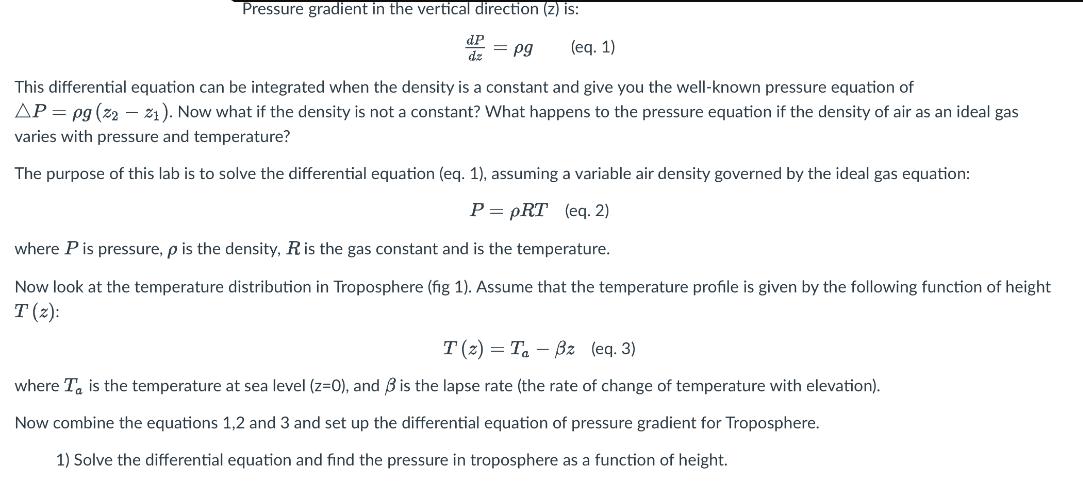Answered step by step
Verified Expert Solution
Question
1 Approved Answer
Pressure gradient in the vertical direction (z) is: (eq. 1) dP dzpg This differential equation can be integrated when the density is a constant

Pressure gradient in the vertical direction (z) is: (eq. 1) dP dzpg This differential equation can be integrated when the density is a constant and give you the well-known pressure equation of AP pg (22-21). Now what if the density is not a constant? What happens to the pressure equation if the density of air as an ideal gas varies with pressure and temperature? The purpose of this lab is to solve the differential equation (eq. 1), assuming a variable air density governed by the ideal gas equation: P=pRT (eq. 2) where P is pressure, p is the density, R is the gas constant and is the temperature. Now look at the temperature distribution in Troposphere (fig 1). Assume that the temperature profile is given by the following function of height T (z): T(z) Ta - Bz (eq. 3) where To is the temperature at sea level (z=0), and 3 is the lapse rate (the rate of change of temperature with elevation). Now combine the equations 1,2 and 3 and set up the differential equation of pressure gradient for Troposphere. 1) Solve the differential equation and find the pressure in troposphere as a function of height.
Step by Step Solution
There are 3 Steps involved in it
Step: 1
step1 To solve the differential equation for pressure gradient in the troposphere we can substitute the expressions for pressure density and temperatu...
Get Instant Access to Expert-Tailored Solutions
See step-by-step solutions with expert insights and AI powered tools for academic success
Step: 2

Step: 3

Ace Your Homework with AI
Get the answers you need in no time with our AI-driven, step-by-step assistance
Get Started


